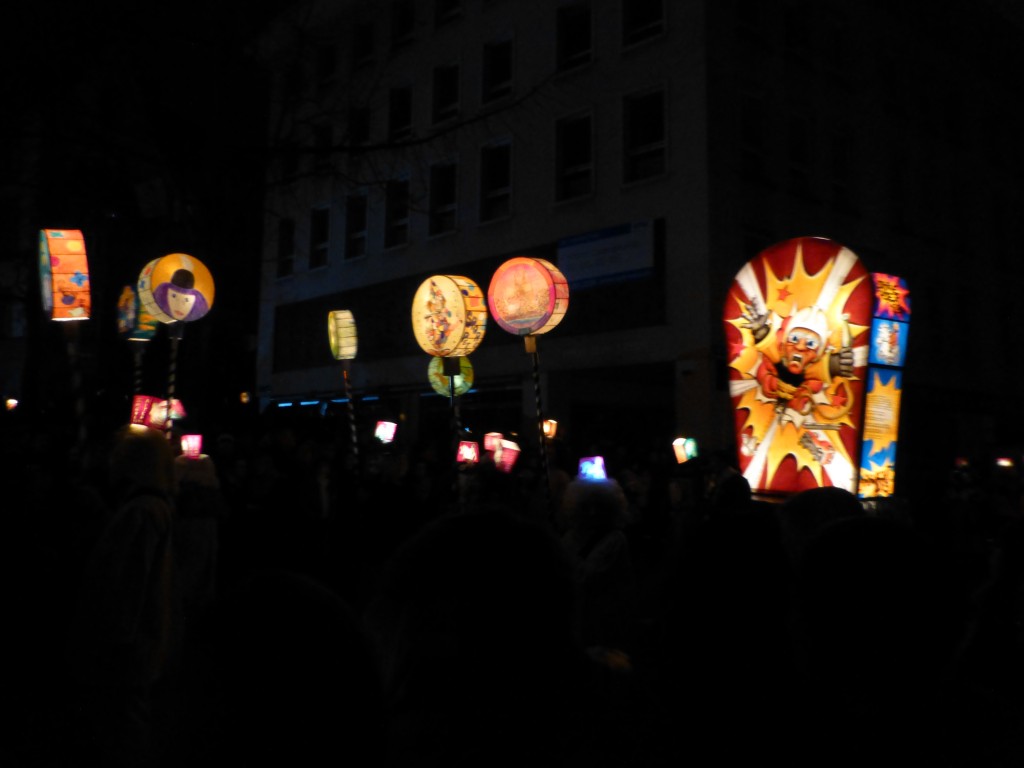For the past two weekends, Christopher and I have seen some of the ugliest and scariest masks; been confetti-bombed a dozen times; threw back shots of Schnapps as if we were in college again; given candy to kids in every imaginable costume like it was Halloween; and danced Gangnam Style in the streets.
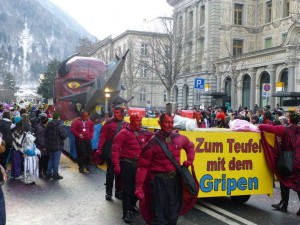
Who knew, but Switzerland celebrates Carnival! Here, it’s called Fasnacht, and each town has its own celebration. The first weekend, we celebrated in Chur. Everyone here was dressed in costume for the occasion, from the young to the old. We attended the afternoon parade where local groups play in full bands and pull floats, typically with a political jab. These groups are comparable to the krewes of New Orleans’ Mardi Gras. Lots of candy, fruit and some toys are thrown to the spectators, but whereas Mardi Gras is known for beads, Fasnacht is known for confetti. It’s thrown from the floats, and some of the group members come into the crowd to pour bags of it on spectators. By the end of the parade, the street isn’t even visible for the confetti.
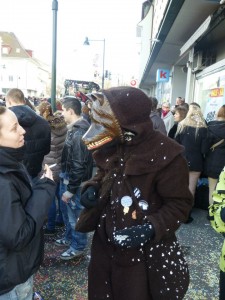
We attended our second Fasnacht celebration in Basel, which has the only Protestant Carnival in the world. Costumes were mainly worn by the children here, but it wasn’t any less of a party atmosphere. Confetti continued to be abundant and it seemed more parade participants offered shots or beer to spectators. The main difference between Chur and Basel seemed to be the parade participant’s costumes. Whereas in Chur most groups had elaborate face paintings, Basel members had intricate masks.
Each town sells its own Fasnacht pin with proceeds going to the groups to buy the masks, costumes, musical equipment, and other festival-related costs. If you’re wearing the pin, the better your odds at getting goodies from the parade participants instead of confetti-bombed.
After the parades, the bands make their ways throughout the evening into local restaurants to play inside for diners. There are also small comedy groups that perform inside, usually taking jabs at politicians, government and other organized institutions.
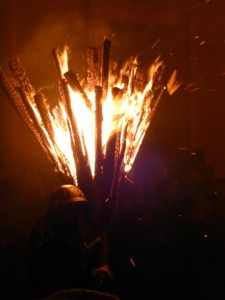
Outside of Basel in Liestal is the Chienbäse, a night parade that has been continuous since the Middle Ages. Firefighters carry large torches through the streets and push carts carrying burning fires with flames 12 feet into the air. If you can stand the smoke, it’s a sight to behold. The next morning at 4, we attended Morgenstreich, the world-famous parade of lanterns in the main city of Basel. All of the lights in town are turned out, and the groups march playing only piccolo flutes and drums. The participants carry lanterns on their heads while the floats are lighted from inside. Unlike the other parades, this one has no set route. Millions of people are just wandering among the darkened streets following the light and music.
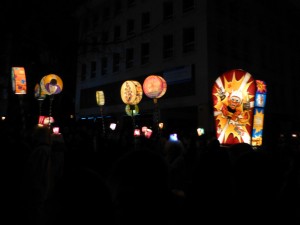
After this early-morning parade, the Couchsurfers we stayed with prepared us a traditional Fasnacht breakfast of Mehlsuppe, a brown flour soup, and Zwiebelwähe, a cheese and onion quiche. We were told traditionally you would wash this all down with beer, but by that point, we had reached our limit.
Fasnacht is the one time of year that the Swiss are allowed to cut loose and enjoy themselves. All the rules the country is known so well for are thrown out the window. We had a wonderful, if not exhausting, time during Fasnacht, and we look forward to celebrating more holidays here. We’ve been told Easter is a pretty big deal, too.
What holidays would you like to celebrate abroad?
-Monica

